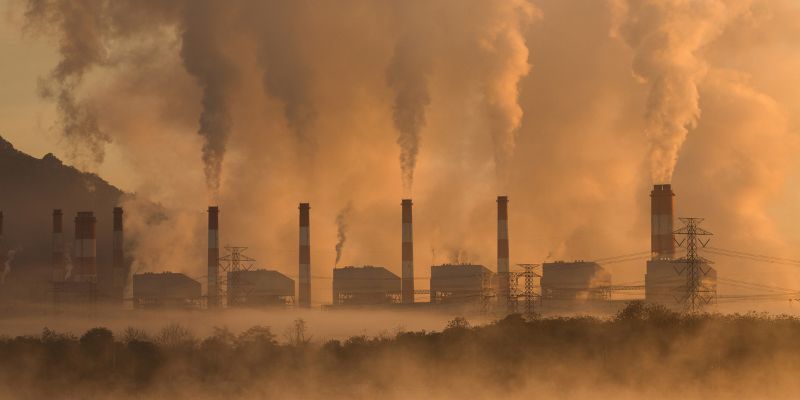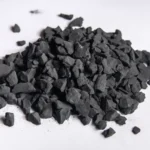Introduction to pollution and its impact on health
Pollution is an invisible enemy that affects millions worldwide. It seeps into our air, water, and soil, wreaking havoc on public health and the environment. The impact can be profound—leading to respiratory issues, heart disease, and even premature death. As we look for solutions to combat this pressing issue, understanding pollution levels in various cities becomes crucial.
In this article, we will delve into a compelling comparison between two distinct cities: Dorsten in Germany and Fresno in California. What do their pollution levels reveal? How does each city cope with its unique challenges? Join us as we explore these questions through a detailed pollution comparison chart that highlights key differences and similarities between Dorsten’s serene landscapes and Fresno’s bustling atmosphere. Get ready to uncover how air quality plays a vital role in shaping the lives of residents!
Overview of the cities of Dorsten and Fresno
Dorsten vs fresno pollution comparison chart is a charming city in North Rhine-Westphalia, Germany. Known for its rich history and beautiful landscapes, it offers a blend of urban life and nature. The Ruhr area influences its culture and economy.
Fresno, located in California’s Central Valley, has diverse agricultural roots. It serves as an economic hub with a vibrant mix of cultures. The proximity to national parks also adds to its appeal.
Both cities have unique characteristics that reflect their regional identities. Dorsten shines with historical architecture while Fresno showcases modern development alongside rural charm.
Though they differ greatly in size and lifestyle, both share challenges related to pollution — an issue increasingly relevant to residents’ health and well-being.
Comparison of air pollution levels in both cities
Air pollution levels in Dorsten and Fresno showcase a stark contrast. While both cities face challenges, the sources and severity differ.
Fresno, located in California’s San Joaquin Valley, often grapples with high ozone levels. The extensive agricultural activities combined with vehicular emissions contribute significantly to this issue. During summer months, smog can blanket the city, impacting visibility and health.
On the other hand, Dorsten experiences relatively lower air pollution levels. Its industrial background is notable but mitigated by effective regulations in Europe aimed at controlling emissions.
However, seasonal variations still play a role; winter heating can lead to temporary increases in pollutants like PM2.5. Residents may notice these fluctuations throughout the year.
Monitoring air quality through reliable data helps communities understand their unique environmental challenges and push for improvements where necessary.
Factors contributing to pollution in each city (industrial, transportation, etc.)
Dorsten’s pollution is heavily influenced by its industrial activities. The presence of manufacturing plants contributes significantly to air contaminants. These facilities often emit volatile organic compounds and particulate matter.
Transportation also plays a vital role in Dorsten’s pollution landscape. With an increasing number of vehicles on the roads, emissions from cars and trucks further degrade air quality.
In contrast, Fresno faces unique challenges due to its agricultural sector. Pesticides and fertilizers released into the atmosphere contribute to hazardous pollutants.
Additionally, traffic congestion is a significant concern for Fresno residents. High volumes of vehicles lead to elevated levels of nitrogen dioxide and ozone, particularly during warmer months when smog forms more readily.
Both cities experience their own set of problems regarding pollution sources stemming from local industries and transportation networks that impact overall environmental health.
Effects of pollution on the environment and residents’ health
Pollution casts a long shadow over both nature and human health. Airborne toxins can infiltrate lungs, leading to respiratory issues such as asthma and chronic bronchitis. The vulnerable populations, including children and the elderly, face heightened risks.
Beyond immediate health effects, pollution disrupts ecosystems. Contaminated air affects vegetation growth, reducing crop yields. Polluted waterways harm aquatic life, which has cascading impacts on food chains.
Additionally, mental health can suffer in polluted environments. Studies link high pollution levels to increased anxiety and depression among residents. This invisible burden weighs heavily on communities stricken by environmental degradation.
Wildlife faces its own challenges too—habitat loss due to industrial expansion or contamination leads many species toward extinction. All these factors intertwine to create an urgent need for effective solutions against pollution’s relentless grip on our planet and its inhabitants.
Initiatives taken by each city to reduce pollution levels
Dorsten has implemented various initiatives aimed at improving air quality. The city has invested in public transportation, encouraging residents to switch from personal vehicles to buses and trains. This shift not only reduces traffic congestion but also minimizes emissions.
Additionally, Dorsten promotes green spaces throughout the area. Parks and community gardens help absorb CO2 while providing residents with recreational opportunities. These natural habitats contribute positively to urban biodiversity as well.
In contrast, Fresno is tackling pollution through stricter regulations on industrial emissions. Local authorities have set limits on pollutants released by factories, ensuring that businesses adhere to environmental standards.
Fresno is also enhancing its urban forestry program, planting more trees within the city limits. Trees act as natural air filters and provide shade for neighborhoods, which can lower local temperatures and reduce energy consumption during hot summers.
The role of individuals in reducing pollution in their communities
Individuals play a crucial role in combating pollution. Small actions can create significant change within communities.
Choosing public transport, biking, or walking instead of driving helps reduce emissions. Each time someone opts for a greener mode of travel, they contribute to cleaner air.
Waste management is another vital area where personal responsibility shines. Reducing plastic use and recycling are effective ways to minimize landfill waste. Composting organic materials can also divert garbage from incinerators.
Engaging in local clean-up events encourages community involvement and awareness about pollution issues. These initiatives foster connections among residents while addressing environmental concerns directly.
Advocacy is powerful too. Individuals can influence local policies by participating in town meetings or contacting representatives about environmental regulations.
The combined efforts of concerned citizens lead to healthier surroundings and inspire others to take similar steps toward sustainability.
Conclusion: Which city has better air quality and overall
When it comes to the comparison of pollution levels between Dorsten and Fresno, several factors come into play. Both cities face unique challenges that contribute to their air quality issues.
Dorsten, with its industrial background, grapples with emissions from factories and transportation routes. While it has made strides in promoting cleaner technologies, the presence of industry still impacts air quality.
Fresno faces its own set of hurdles as well. Located in California’s Central Valley, it experiences high levels of ozone and particulate matter due to agricultural activities and heavy traffic congestion. Despite ongoing efforts for improvement through state initiatives aimed at reducing vehicle emissions, challenges persist.
The health implications for residents in both cities are significant. Poor air quality can lead to respiratory problems and other serious health concerns over time. It’s crucial for individuals within these communities to engage in practices that help reduce pollution—whether that’s opting for public transport or advocating for greener policies.
Both Dorsten and Fresno have launched various initiatives geared towards minimizing their environmental footprint. These include community awareness programs and investments in renewable energy sources designed to improve overall living conditions.
As we analyze the circumstances surrounding each city’s pollution levels alongside their respective measures taken toward enhancement—it’s evident that while both struggle with similar issues, one may provide slightly clearer skies than the other based on current data trends regarding air quality indices.
Ultimately determining which city offers better air quality requires a thorough examination of localized data points along with considerations about resident lifestyle choices contributing further to these dynamics.







